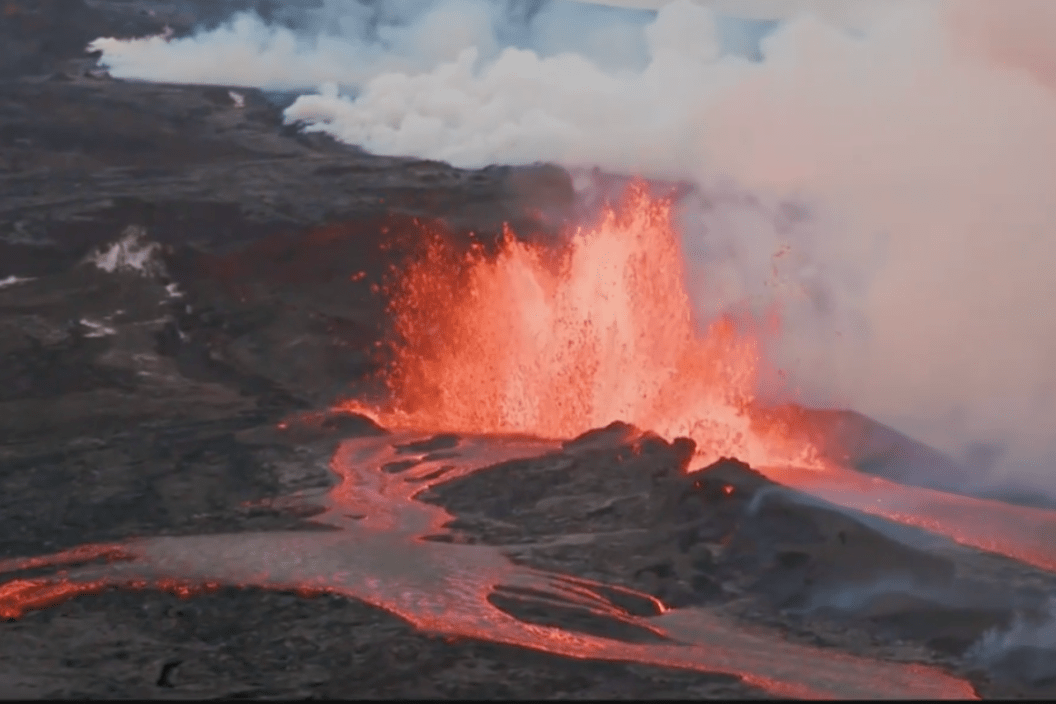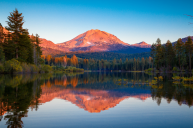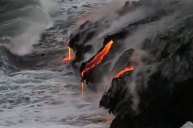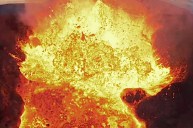It's been over three decades since Hawaii's Mauna Loa volcano erupted. Following the March 1984 eruption, the volcano went silent for the longest recorded timeframe until it began to stir again this past November. The eruption on the 27th began as a slow roll of ash as the fissures opened up, spewing lava. From there, it rose in intensity, with lava fountains eventually reaching 164 feet.
A helicopter camera crew was able to capture the incredible scene.
[sweeps_fshing]
The USGS reported that "Initial fissures covered the floor of Moku'āweoweo caldera with new lava, but this area was mostly inactive by the time HVO field crews arrived after sunrise on Monday morning. Other fissures spilled lava to the southwest of the summit region, but this area was also inactive by that time."
The upper Northeast Rift Zone toward the NOAA Mauna Loa Observatory saw active lava. However, the lava flow did not reach the building. Most of the lava coming from the volcano comes from one fissure but flows in multiple directions.
The USGS said, "This afternoon, fountains at Fissure 3 were consistently 131-164 ft tall, and fountains at Fissure 4, which formed at approximately 7:30 p.m. HST on November 28, were 16-33 ft tall." They also said that "no property is at risk currently."
A sentiment echoed by County Mayor Mitch Roth. There were no official evacuation orders, but a few residents did opt to leave. As a result, officials opened shelters in Kona and Kau. Residents stayed from Monday into Tuesday, but the shelters were closed on Tuesday. According to Hawaiian Volcano Observatory scientist Ken Hon, the lava flow was moving at one mph or less. The flow is expected to continue the trend as it reaches the level ground, though it was headed toward Saddle Road.
"We're not even sure it will reach the highway, but that is certainly the next step in progress if it continues on these trends," Hon said. He pointed out that other fissures can open up along the way, sapping up some of the lava flow.
"We're thankful the lava flow is not affecting residential areas at this time, allowing schools and businesses to remain open," Hawaii Gov. David Ige, D, said in a statement. "I'm issuing this Emergency Proclamation now to allow responders to respond quickly or limit access, if necessary, as the eruption continues."
Ige also said the island is "open to visitors, and it is safe to view the volcano from a distance."




